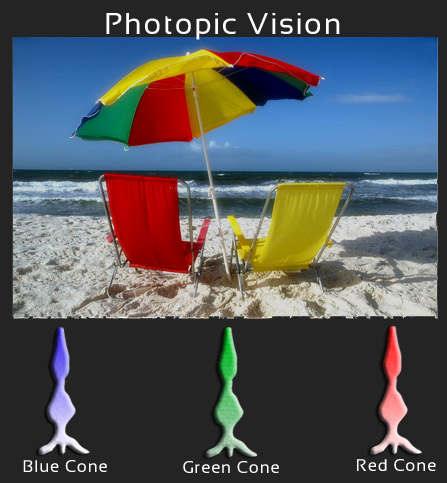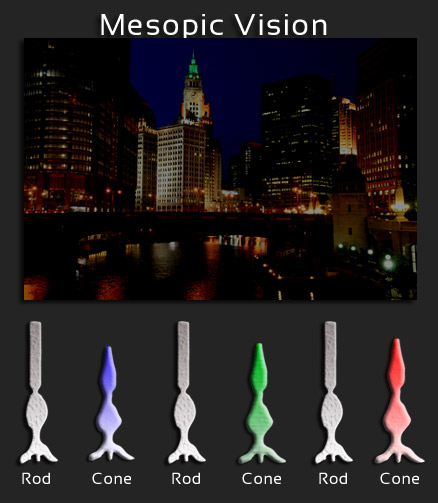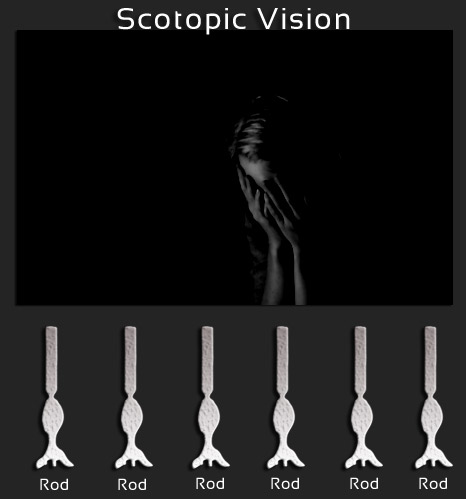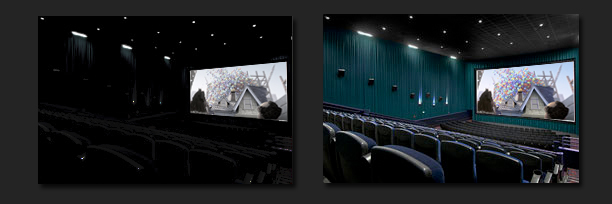"There are two kinds of light - the glow that
illuminates, and the glare that obscures."
- James Thurber, American Writer
Hemeralopia: The Debilitating Glare of Achromatopsia
Life with achromatopsia is a battle against the glare. A glare so powerful that it can overwhelm the patient in all but the lowest light levels. The patient is literally blinded by the light. This severe day blindness is called hemeralopia.
The most well known achromat in history was the late Knut Nordby. He was a scientist and achromat. He brought together an understanding of the science and his own personal experience with rod monochromatism to advance our understanding of achromatopisa. He went with Oliver Sacks on their famous trip to visit the Pingalapese people in the East Caroline Islands, the now famous "Island of the Color Blind." Below he talks about his battle with the light.
“I am easily dazzled and, in effect, blinded if I expose my eyes to bright light. If I open my eyes fully for more than one or two seconds under such conditions ......... the scene I am gazing at is quickly washed out, turned into a bright haze and all structured vision is lost. “
Knut Nordby, Vision in a complete achromat: a personal account. Night Vision R.F. Hess, L.T. Sharpe & K. Nordby
Without adequate filters, patients are forced to squint their eyes, blink constantly and look down and away from the light. Without sunglasses on outside, some patients must blink their eyes and depend partially on the brief afterimage formed on their retina. Afterimages are the brief imprints of images left in our retina. They tend to be enhanced by blinking.

Thus if they keep blinking, the afterimage continues. From childhood, achromats learn that nighttime is their best time to enjoy the world. Children may insist on staying inside until the darkness comes. They learn to relish the better and more comfortable vision at night in the dark.
Below the late Frances Futterman, Founder of the Achromatopsia Network talks of her experience in her early years without sunglasses. Francis lived in the shadeless bright sun of Texas without the benefit of sunglasses until she was nearly an adult.
“In order to see outdoors in the daytime, I had to blink rapidly and continuously. When I would open my eyes even briefly, I could not see the world around me, because I was blinded by light. It was like having strong floodlights aimed at my eyes. The squinting and blinking allowed me to obtain just enough visual information to move about in reasonably safe surroundings....... Each time my lids opened a little, I saw only the blinding light, but each time they closed, I got a fleeting glimpse of my surroundings. Thus, with my eyes closed, I could ‘see’ what it was not possible for me to see with my eyes open..... My vision in full sunlight consisted mainly of seeing with my eyes closed!”
Frances Futterman, Understanding
and Coping with Achromatopsia
To better understand this debilitating glare, we must learn how our retina is organized. Our visual system consists of a two-receptor system with the cone cells providing vision in bright light (photopic vision), the rod cells providing vision in very low levels of light (scotopic vision) and both rods and cones functioning in the middle (mesopic vision).
Here we see the photopic system. Only the cones can fully function as the rods bleach out quickly in bright lights. Three types of cone cells, red, green and blue, provide a wide range of color perception in bright light.

Below we see the Mesopic region where both the rods and cones are functioning. The lower light level allows the rod to replenish the light sensitive rhodopsin and begin functioning. The cone receptors (red, green and blue) still have enough light to provide some amounts of color vision. This occurs in moderately low light levels like right after sunset.

The scotopic region as shown below occurs in very dim light like viewing grass in a moonless night. Here only the rods are functioning. The chemicals in the cones no longer have enough light to respond, thus we no longer see color.

All three systems, photopic, mesopic and scotopic together allow us to see over a wide range of lighting levels with about one or two billion times range from the dimmest to the brightest image we can see.
In complete achromatopsia, the cone cells are either missing or not fully functioning. Achromats are left with only the rod cells. These cells are effective only in low levels of light due to the very light sensitive chemical pigment called rhodopsin. Rhodopsin is unstable in bright light and will bleach out in all but low light levels. Thus the vision of a complete achromat is similar to a "normal" only in the scotopic range where rods naturally function alone.
We experience how rods work, when we attend a movie matinee. As we enter from bright sunlight into the darkness of the theater, it is difficult to see. The bright outside sun has bleached out the chemicals in the rod cells. After we enter the movie theater, if we look about the theater we find it dark and difficult to see, as shown in the photo below on the left. Within ten minutes in the dark theater in the lower light levels, our rods receptors in the retina begin to replenish the rhodopsin chemical in our retina. Our vision begins to improve. The theater no longer seems as dark as shown in the picture below on the right. We can see other people around the theater. The rods are no longer bleached out.

When the movie ends, and we walk outside into the bright sunlight, we are suddenly faced with a few seconds of “white-out” glare. This is the sudden dramatic bleaching out of the rod cells which in the darkness have reproduced the rhodopsin photopigment. After a few seconds, our vision stabilizes and we are comfortable again. The rhodopsin has now been significantly bleached away by the sunlight. We are now using our cone cells only. The rods are no longer functioning.
That sudden “white-out” glare that we may experience only for a few second leaving the dark movie theater into bright sun is similar to what the achromat can experience day-in and day-out throughout their life in bright lighting. However, for most of us, cone cells quickly take over functioning. In achromats with no cones or minimal cones to take over in bright light, their rod vision bleaches away in the light, and they become trapped in the bright light without cone receptors.
If we control the light with filters in glasses, contact lenses or both, we can artificially create scotopic low light levels and improve the functioning vision of achromats in bright light.
"..the most debilitating, handicapping and distressing consequence of my achromatopsia has been my hypersensitivity to light and the resulting light aversion, which is also reported by all other authors. This is also the unanimous verdict of all the achromats I have interviewed so far. Both the practical problems of being dazzled, the narrowing of the visual fields, resulting in restricted mobility, and the social problems of light aversion and feeling clumsy in intense light is frequently reported by my informants as being more of a hindrance to them than not being able to experience color hues or to discern small detail."
Knut Nordby, Vision in a complete achromat: a personal account. Night Vision R.F. Hess, L.T. Sharpe & K. Nordby
After working for many decades with achromatopsia patients, we have learned that controlling the light is the single most important step in helping achromats function better. In the next sections, we will describe new methods to control the light.
